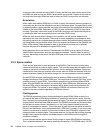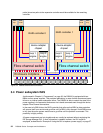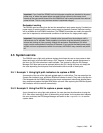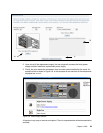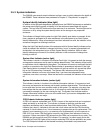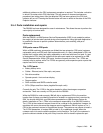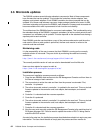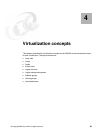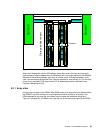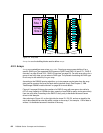
62 DS6000 Series: Concepts and Architecture
3.6 Microcode updates
The DS6000 contains several discrete redundant components. Most of these components
have firmware that can be updated. This includes the controllers, device adapters, host
adapters, and network adapters. Each DS6800 controller also has microcode that can be
updated. All of these code releases come as a single package installed all at once. As IBM
continues to develop and improve the DS6800, new releases of firmware and microcode will
become available which offer improvements in both function and reliability.
The architecture of the DS6800 allows for concurrent code updates. This is achieved by using
the redundant design of the DS6800. In general, redundancy is lost for a short period as each
component in a redundant pair is updated. This also depends on the attached hosts having a
separate path to each controller.
Each DS6800 controller card maintains a copy of the previous code version and the active
code version. When a code update is performed, the new code version is written to the
controller and then activated.
Maintaining code
It is the responsibility of the user to ensure that their DS6800 is running on the currently
available version of microcode. They can do this by monitoring the code level currently
available at:
http://www-1.ibm.com/servers/storage/support/disk/index.html
The currently available version of code can also be downloaded from this Web site.
Users can also register for support e-mails at:
https://www-1.ibm.com/support/mysupport/us/en/
Installation process
The concurrent installation process proceeds as follows:
1. Copy the new DS6800 code version onto the DS Management Console and from there to
the internal storage of each controller.
2. The user selects to active the code and from then the process is automated. First,
controller 1 is quiesced.
3. The active microcode version in controller 1 is updated to the new level. This may include
firmware updates to the controller card, host adapter, device adapter, and network
adapter.
4. Controller 1 is rebooted and then resumes operation.
5. Controller 0 is quiesced.
6. The active microcode version in controller 0 is updated to the new level. This may include
firmware updates to the controller card, host adapter, device adapter and network
adapter.
7. Controller 0 is rebooted and then resumes operation.
8. Now the user must manually update the DS Management Console to the matching level of
DS System Manager GUI. You also need to update the version of DS CLI being used to
match the SM GUI version.
As noted, after step two, the installation process described above should not require any user
intervention. The user should be able to simply start the process and then monitor its



